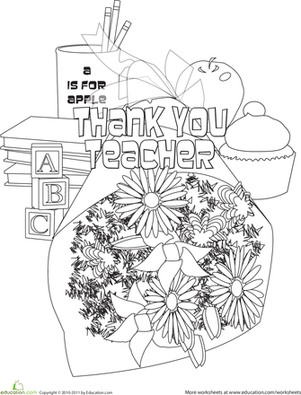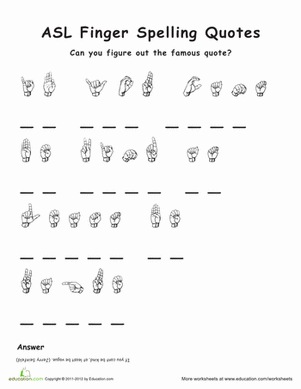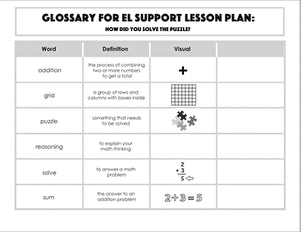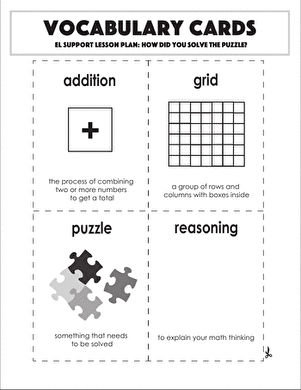Science project
Eye Witness, You Witness
Type
Grade Level
Difficulty of Project
Safety Issues
Material Availability
Materials are readily available.
Approximate Time Required to Complete the Project
8 hours. Two weeks total elapsed time.
Objective
Eyewitness, You Witness: How well can people recall an event that they witnessed? Gather some people for this experiment and test their powers of recall.
Materials and Equipment / Ingredients
- TV Show or movie (DVD or streaming)
- TV/DVD or computer to show program
- Room large enough to hold 10+ people
- Paper
- Pens or pencils
- Clock
- Popcorn
- Drinks
- 20 subjects – people on whom you will test this experiment
- 1 helper
Introduction
In this project, you will be testing people’s power of observation. In real life, eyewitness testimony is used help prove whether people are guilty or innocent. In a school setting, this might be a question of who started a fight or who spilled food in a cafeteria. For adults, eyewitnesses can help the police decide who caused a car accident or who robbed a house. If witnesses are involved, then it is important to know how accurate they are. Should you rely on them if you’re deciding something important, such as who should go to jail for committing a crime?
How accurate are witnesses? How much do people remember seeing, hearing, smelling, tasting or feeling right after an event occurs? How much do people remember days after an event takes place? Researchers have studied human memory. They have found that people often remember events incorrectly. For example, people might remember details that did not occur, especially if someone else mentions those details, too.
Now it’s time for you to be the researcher. You will design an experiment to help you answer these questions. You will give people an ordinary task to do, like watching a movie. In the middle of this task, you will have an event take place, like a person bringing in popcorn. Without being prompted to try to remember exact details, how much will your witnesses be able to recall?
Research Questions
- How many details will people recall immediately after an event happens?
- After two weeks, what will people still recall?
- Is 20 people an appropriate sample size, in terms of number of subjects?
Terms, Concepts and Questions to Start Background Research
In this science project, you will learn about your subjects’ ability to recall details of an event. They will provide eyewitness testimony. You will ask the subjects to answer five objective questions and check their answers. You will gather your witnesses again two weeks later, and retest their memory, to see if it has changed. Make a chart to visually demonstrate what percentage of questions people were able to answer correctly. You will use a sample size of twenty people for this experiment.
- Subjects: A person whom a researcher is studying as part of an experiment.
- Eyewitness: A person who actually sees or hears some act and can give a firsthand account of it.
- Testimony: A statement that a witness makes, often in a court of law.
- Objective: An objective question is one where the answer is based on facts, and is not influenced by a person’s feelings or experiences. For instance, let’s say your helper in this experiment is wearing a green shirt. If you ask what color is the helper’s shirt, that is an objective question. Green is the right answer, and all other answers are wrong. If you ask if the subject liked the color of the shirt, that question is subjective. There is no right or wrong answer, so that is not a good question to use for this experiment.
- Sample Size: The number of observations that a researcher makes while conducting his or her experiment. In this case, the sample size is the number of people tested.
Experimental Procedure
- Review the steps of this experiment with your parents, if you will be involving them or using your home.
- Find twenty classmates to participate in your experiment. These should be people whom you see often, as you will need to conduct two sessions with these people. The second session will take place two weeks after the first session. Since you do not want the subjects to know what the experiment is about, you can keep your invitation vague. Ask them to come over to watch a movie (or a TV show) as part of your science experiment. You can invite your subjects to come as one group or to come in two sets, depending on the size of the space you have available.
- Get the necessary supplies, including the popcorn. Decide what movie (or TV show) you want to play and where you will show it.
- Arrange for a parent or another friend to help you. This helper will deliver the popcorn while the rest of you are watching the movie. Your witnesses will try to describe this helper’s actions and appearance. Ideally this person will be someone that the subjects do not know well. You may want to ask a neighbor or a friend from another school.
- Write a list of questions you will ask your subjects. You will want to ask at least five questions. Then, print enough copies of this questionnaire so that there are two copies for each subject. If you can’t print it out, you could read the questions to each person and have them record their answers on a blank piece of paper.
Here are some examples of questions you might ask. Make sure the questions are objective, so that you can clearly tell the right answers.
- What color was the person’s shirt?
- What time did the person come into the room?
- What did the person say when he/she entered the room?
- What was the person carrying?
- What color was the person’s hair?
- How tall was the person?
- Did the person have any tattoos or other distinguishing features? If yes, describe them.
- Meet with your helper to describe what he / she needs to do, say and wear. You will want to make sure that you review the questions you have picked and both agree on the answers. Agree on what time you want the person to come in to the room, and write down something distinctive that you want the person to say. Here are some examples:
- “Does anybody want any popcorn? I’ve popped twelve bags.”
- “Sorry I’m late. I had to wash my father’s schnauzer.”
- “Great movie. I wish I could stay and watch, but I need go to the airport to catch a plane to Chicago.”
- You might also want to create some distinguishing features, such as having the person wear a temporary tattoo or pretend to walk with a limp.
- Think about your hypothesis. What results do you think you will get? Will most people be able to answer most questions correctly? Will people remember as much two weeks later as they remembered on the night of the event?
- On the day of the experiment, pop the popcorn, prepare the drinks assemble your questionnaires and pencils, and get the movie ready to be turned on.
- Have your helper come early to your house or wherever you are conducting the experiment. Do not let the subjects see this person in advance.
- Once all your subjects have arrived, assemble them where you will be watching the movie. Tell your subjects that you will tell them the details of the experiment after the movie.
- At the agreed upon time, have your helper come into the room with the popcorn. Have the person serve the popcorn, saying whatever you agreed on. Then the helper should leave the room.
- Wait about ten minutes, or until the end of the scene in the movie you are watching. Then pause the movie and tell your subjects that you have questions for them. You can tell people that this experiment really is about their skills as a witness.
- Hand out the questionnaires and have people answer the five questions.
- Once the questions are answered, collect the questionnaires. Now you can enjoy the rest of the movie and the popcorn!
- Check the people’s answers. Record your data on a form such as the sample table below.
- Two weeks later, have the subjects fill out the same questionnaire. You will see if they get the same or a different number of the questions right. Record this data.
- Next, chart your data. A useful format might be a bar chart, which you can draw by hand, or create in a program like Microsoft Excel.
- Compare the data from the first questionnaire to the one from two weeks later. What differences do you see? What conclusions can you now draw about eyewitness testimony?
- If you want to study further, you could try these variations.
- You could ask multiple-choice questions instead of having your witnesses write in their answers without prompting.
- You could allow your witnesses to talk together to see if they come up with the right answers. In this case, you would let them talk together about the questions, but still fill out their individual questionnaires, so they could each give their own answers if they disagree with one another.
- You could plant a friend in the group of subjects. You will instruct this person to deliberately give the wrong answer to a question while the group is discussing what occurred, and see if this friend can convince the others.
- Change your experiment so that your helper is someone that the subjects know well. Does this alter the experiment?
- Tell half of your witnesses in advance that they will be asked to describe your helper. See if this improves their power of recall.
- Do not question your subjects on the day of the experiment. Only question them two weeks later, and see if this changes their percentage of correct answers to the questions.
Sample Questionnaire
Please answer all of the following questions. If you don’t know, write “Don’t Know.”
- What color was the person’s shirt? _____
- What time did the person come into the room? _____
- What did the person say when he/she entered the room? _____
- What color was the person’s hair? ___________________
- Did the person have any tattoos or other distinguishing features? If yes, describe them. _____
Sample Table of Results
|
Results for each Subject |
||||||||||||
|
Subject
|
Question Number and Whether or Not Correct |
Total Correct, Day of Experiment |
Question Number and Whether or Not Correct |
Total Correct, Two Weeks Later |
||||||||
|
|
1
|
2
|
3
|
4
|
5
|
|
1
|
2
|
3
|
4
|
5
|
|
|
Adam
|
Ö
|
Ö
|
Ö
|
X
|
Ö
|
4
|
X
|
X
|
Ö
|
X
|
Ö
|
2
|
|
Betsy
|
Ö
|
X
|
Ö
|
X
|
Ö
|
3
|
Ö
|
X
|
Ö
|
X
|
Ö
|
3
|
|
Carlos
|
Ö
|
Ö
|
Ö
|
Ö
|
Ö
|
5
|
Ö
|
Ö
|
Ö
|
Ö
|
X
|
4
|
|
Diana
|
Ö
|
Ö
|
X
|
Ö
|
Ö
|
4
|
Ö
|
Ö
|
X
|
Ö
|
Ö
|
4
|
|
Ewan
|
Ö
|
X
|
X
|
X
|
Ö
|
2
|
Ö
|
X
|
X
|
X
|
Ö
|
2
|
|
Frankie
|
Ö
|
Ö
|
Ö
|
X
|
Ö
|
4
|
Ö
|
Ö
|
Ö
|
X
|
Ö
|
4
|
|
Grace
|
Ö
|
X
|
X
|
Ö
|
Ö
|
3
|
Ö
|
X
|
X
|
Ö
|
Ö
|
3
|
|
Harpo
|
X
|
X
|
X
|
X
|
Ö
|
1
|
X
|
X
|
X
|
X
|
Ö
|
1
|
|
Ilana
|
Ö
|
Ö
|
Ö
|
Ö
|
Ö
|
5
|
X
|
Ö
|
X
|
Ö
|
Ö
|
3
|
|
Julie
|
Ö
|
X
|
Ö
|
Ö
|
Ö
|
4
|
Ö
|
X
|
Ö
|
Ö
|
Ö
|
4
|
|
Kim
|
X
|
Ö
|
Ö
|
Ö
|
Ö
|
4
|
X
|
Ö
|
X
|
X
|
X
|
1
|
|
Lou
|
Ö
|
Ö
|
Ö
|
X
|
Ö
|
4
|
Ö
|
Ö
|
Ö
|
X
|
Ö
|
4
|
|
Manny
|
Ö
|
Ö
|
Ö
|
Ö
|
X
|
4
|
Ö
|
Ö
|
Ö
|
Ö
|
X
|
4
|
|
Nedda
|
X
|
Ö
|
X
|
Ö
|
X
|
2
|
X
|
Ö
|
X
|
Ö
|
X
|
2
|
|
Owen
|
Ö
|
Ö
|
Ö
|
Ö
|
Ö
|
5
|
Ö
|
Ö
|
Ö
|
Ö
|
Ö
|
5
|
|
Paolo
|
Ö
|
Ö
|
Ö
|
Ö
|
X
|
4
|
Ö
|
Ö
|
Ö
|
Ö
|
X
|
4
|
|
Quincy
|
Ö
|
Ö
|
Ö
|
X
|
Ö
|
4
|
Ö
|
Ö
|
Ö
|
Ö
|
Ö
|
5
|
|
Ricky
|
Ö
|
Ö
|
Ö
|
Ö
|
Ö
|
5
|
X
|
X
|
X
|
X
|
X
|
0
|
|
Sam
|
X
|
X
|
Ö
|
X
|
Ö
|
2
|
X
|
X
|
Ö
|
X
|
Ö
|
2
|
|
Tran
|
X
|
X
|
X
|
X
|
Ö
|
1
|
X
|
X
|
X
|
X
|
Ö
|
1
|
Sample Chart of Results

Bibliography
- Loftus, Elizabeth. Eyewitness Testimony. Harvard University Press (February 1, 1996), Cambridge, MA.
- Tversky, Barbara, Professor of Psychology, and Fisher, George, Professor of Law. The Problem with Eyewitness Testimony, Stanford Law School, April 5, 1999.
- National Institute of Standards and Technology website: 3.3.3.3 Selecting Sample Sizes
Education.com provides the Science Fair Project Ideas for informational purposes only. Education.com does not make any guarantee or representation regarding the Science Fair Project Ideas and is not responsible or liable for any loss or damage, directly or indirectly, caused by your use of such information. By accessing the Science Fair Project Ideas, you waive and renounce any claims against Education.com that arise thereof. In addition, your access to Education.com's website and Science Fair Project Ideas is covered by Education.com's Privacy Policy and site Terms of Use, which include limitations on Education.com's liability.
Warning is hereby given that not all Project Ideas are appropriate for all individuals or in all circumstances. Implementation of any Science Project Idea should be undertaken only in appropriate settings and with appropriate parental or other supervision. Reading and following the safety precautions of all materials used in a project is the sole responsibility of each individual. For further information, consult your state's handbook of Science Safety.













